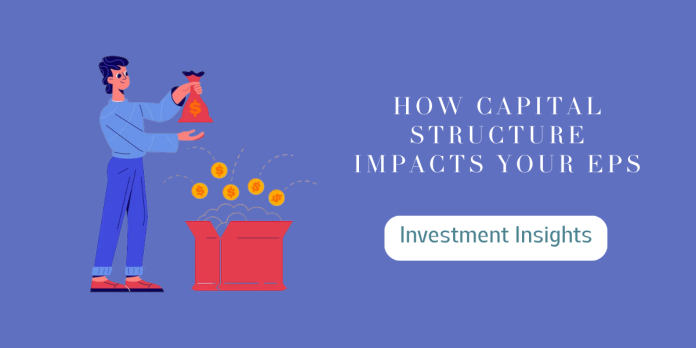Securing capital is a crucial step for businesses, whether they’re publicly traded or private. Companies use different methods like stocks and loans to raise funds. However, finding the right balance in their capital structure is quite a challenge. How they structure their capital can have a significant impact on the earnings per share (EPS) of their shareholders.
Let’s imagine a scenario where a company has chosen to raise all its capital through debt, and it enjoys tax benefits due to the interest payments on that debt. Another company has opted for an all-equity approach, so it doesn’t have any tax benefits, but it doesn’t have to worry about interest payments either.
Then, there’s a third company that has gone for a mixed capital structure, using both debt and equity. This third company has to deal with both interest payments and taxes. In reality, the mixed capital structure is quite common because it allows companies to raise funds through both debt and equity, striking a balance between the two.
| PARTICULARS | COMPANY A | COMPANY B | COMPANY C |
| CAPITAL STRUCTURE | 100% DEBT | 100% EQUITY | MIX (60%EQUITY, 40% DEBT) |
| EBIT | 1,00,000 | 1,00,000 | 1,00,000 |
| LESS INTEREST (10%) | 10,000 | NIL | 4,000 |
| EBT/PBT | 90,000 | 1,00,000 | 96,000 |
| LESS TAX (30%) | NIL | 30,000 | 28,800 |
| PAT (NET PROFIT) | 90,000 | 70,000 | 67,200 |
* EBIT = sales – variable cost = contribution – Fixed cost = EBIT
*Further the EPS is calculated by dividing net profit by the number of outstanding securities.
A company’s capital structure decision is influenced by a number of factors, including:
- Industry: The industry in which a company operates can have a significant impact on its capital structure. For example, capital-intensive industries, such as manufacturing and utilities, tend to have higher levels of debt in their capital structures. This is because these companies need to invest a lot of money in equipment and facilities.
- Financial condition: A company’s financial condition also plays a role in its capital structure decision. Companies with strong financial performance tend to have lower levels of debt in their capital structures. This is because these companies have more options for raising equity, such as issuing new shares or selling existing shares to investors.
- Overall market environment: The overall market environment can also affect a company’s capital structure. For example, in times of economic uncertainty, companies may be more likely to issue debt rather than equity. This is because debt is generally considered to be a safer investment than equity in times of economic uncertainty.
- Cost of capital: The cost of capital is the rate of return that a company must earn on its investments in order to justify the cost of financing those investments. A company will typically choose a capital structure that minimizes its cost of capital.
- Risk tolerance: A company’s risk tolerance is also a factor in its capital structure decision. Companies that are more risk-averse are more likely to have lower levels of debt in their capital structures. This is because debt can increase the risk of bankruptcy.
Read: Decoding PEG Ratio
It is important to note that there is no one-size-fits-all approach to capital structure. The best capital structure for a company will vary depending on its specific circumstances.


